13 Facts About the African Spoonbill (Platalea alba)
In this post, you’ll learn all about the African Spoonbill, with facts including their size, scientific name, range, diet, lifespan, parenting techniques, population, threats, and protection status.
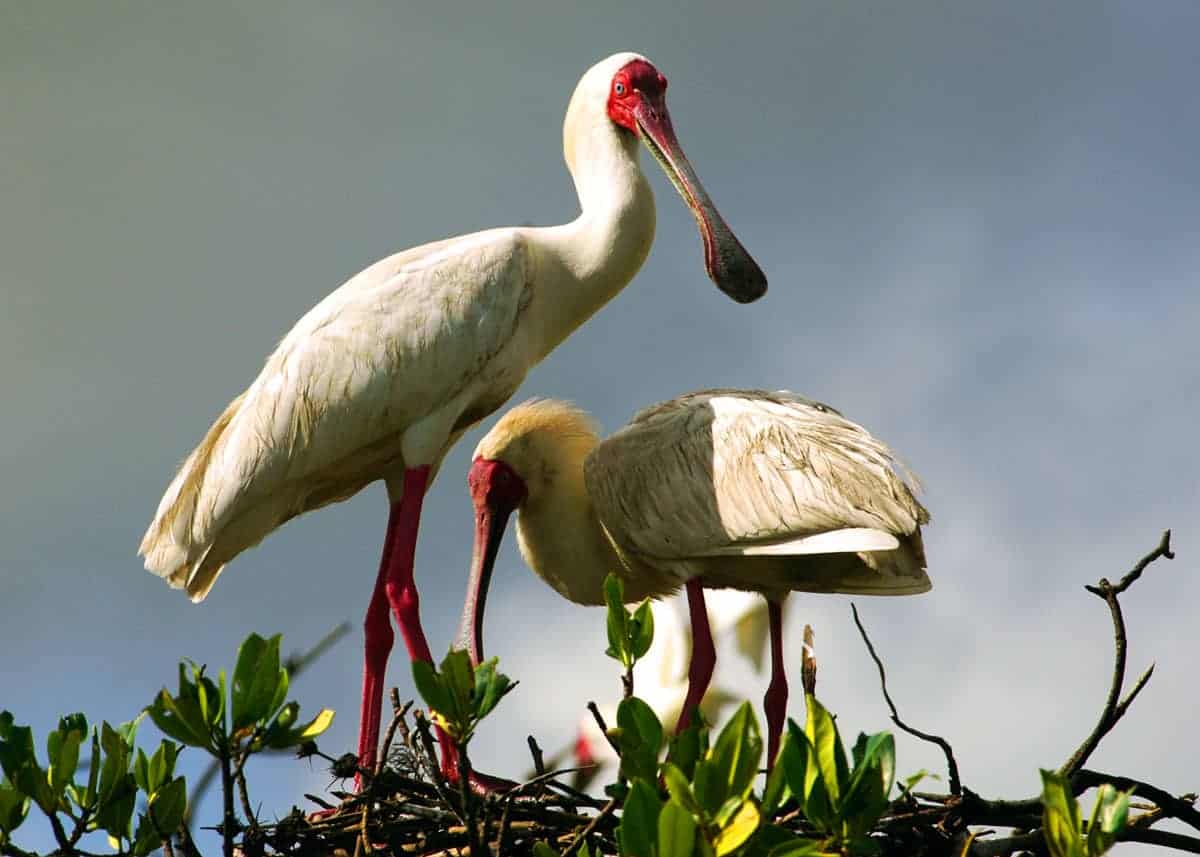
Learn more about the other birds of Uganda.
13 Facts About the African Spoonbill
If you are traveling to the African continent, there is no shortage of wonders to see. Beautiful landscapes and amazing creatures that would seem exotic anywhere else in the world are quite at home here.
One such fascinating creature is the African spoonbill. Much like cranes or storks in other parts of the world, these graceful birds offer much to pique the interest.
Here are 12 things about the African spoonbill that you might find interesting.
1. They Are Related to the Ibis
The African spoonbill is related to the ibis. They belong to the Threskiornithidae family along with the ibis. Their Latin name is Platalea alba which, literally translated, means pearl waterbird. These African birds are one of six spoonbill species and their common name is derived from – surprise! – their long beak, which much like a spoon, is flattened at the end.
If you want a full break down of their classification, here it is.
- Kingdom: Animalia
- Phylum: Chordata
- Class: Aven
- Order: Pelecaniformes
- Genus: Platalea
- Species: P. alba
Learn more: 22 Facts about Uganda
2. They are Waterbirds
The African spoonbill is built for the water. This type of spoonbill has long, thin legs so that they are better able to walk through water. They are all white except for their face and legs, which, if they are of breeding age are red. When mature these birds have gray beaks. Until they come of age, the younger birds have yellow beaks. They are not as flamboyant or showy as other members of their family, because unlike other members of their family, these guys have no crest to show off.
3. The Spoonbill is the Size of a 3-Year-Old Human
The average African spoonbill is approximately the size of a toddler, which is pretty big for a bird. They stand approximately three feet tall with an incredible wingspan of between four and four-and-a-half feet in length.
Learn more: Uganda Currency: 12 Things to Know
4. They Own Africa
African spoonbills, true to their name, call much of the African continent and Madagascar home.
They have claimed territory everywhere across the continent – from Botswana and Kenya, to Mozambique and South Africa. And while the spoonbills prefer to stay near the water, there are few places you will go that people do not recognize these water birds.
5. They are Shy
African spoonbills are introverts. They are pretty shy and prefer to associate with their own kind. If a human gets too close, they will fly away.
They may socialize in small groups of three to five others. But, that group may be nestled in a larger gathering of up to 1000 birds including not only spoonbills, but heron, ibis and flamingos. Like most introverts, though, even if they keep to themselves, they are still paying attention. They do not have a distinctive call or even make much noise at all unless they feel threatened. When a threat is identified, they will sound the alarm to their fellows by making a loud grunt-like noise.
6. African Spoonbills Love Seafood
Did we already mention how they are built for the water? Their long legs make wading in and moving through water pretty easy. They fish in the shallow waters of inland rivers, lakes, marshes and stream where they tend to settle.
An African spoonbill will dip its long, flat bill into the water and move it back and forth looking for fish, mollusks, crustaceans, insects and larvae. It will snap up a tasty treat into its signature bill and jerk its head back to swallow. By feeding on small fish, insects and invertebrates, they help to control these populations.
Watch on YouTube
7. They Can Live 15 Years (or More)
Some birds, like robins, can live as little as two years. Other birds, like macaws can live from 50 up to 100 years. The African spoonbills have a pretty long lifespan. In the wild they can live as long as 15 years. In captivity, their lives can extend to an average of 17 years.
8. They are Good Parents With Stable Families
Three to five eggs are laid in the nests of the African spoonbills during mating season. The mating season is just before or during the rainy season, with eggs usually being laid in April or May. Breeding pairs will settle in communities with as many as 250 other breeding pairs. These nests are built in trees, reed beds, islands and rocky ledges.
These monogamous pairs will take turns – male and female – sitting on the nest to incubate their eggs. Eggs usually take about 4 weeks to hatch. Until chicks fledge (fly away) they are offered food by their parents.
The young birds eat by reaching into their parents’ open bills and taking out regurgitated food. Chicks stay in the nest for the next 4 weeks where they are cared for by both mother and father. After that time, chicks are able to leave the nest, but stay with parents an additional four weeks until they can fly. They are not considered fully mature until they are about three years old.
9. They Have a Stable Population
The African spoonbills are very lucky creatures. They are prolific enough that they do not appear to be much threatened. While they may seem an exotic species to most westerners, they are not endangered.
In fact, they are classified as being of least concern by the International Union for Conservation of Nature, the global authority on the status of the natural world and the measures needed to safeguard it.
10. Humans are Their Biggest Threat
Like most birds, there are predators that spoonbills must be wary of, but only a very few. In fact, like most animals in general, the greatest threat is to their young because they are more vulnerable than adults. Young spoonbills can be preyed upon by crows, vultures, snakes, and mammals.
The greatest threat to the African spoonbill whether chick or adult, like many species, is the loss of habitat that is the result of man’s increasing encroachment on their natural habitat. As more and more land is being developed, the spoonbills find less area to nest and rear offspring, and less area to fish for food to feed themselves and their families.
11. They Like to Live Near the Water
Because they are water birds, the African spoonbills settle along inland bodies of water, including lakes, streams, rivers and marshes. They nest, often on partially submerged trees and in reed beds. The nests are flat, oval structures made of reeds, twigs and grasses. They may be lined with grass and leaves. They are usually fashioned by the female spoonbill from materials collected and carried in by the male spoonbill.
These monogamous pairs will rear offspring together, sharing all of the duties involved. They are most likely to migrate from these nests based on availability of food and habitat loss rather than due to the change in seasons.
12. They are Very Egalitarian
The African spoonbills may be one of the most egalitarian species on the planet as they share all duties between males and females. Other than the anatomical differences that are not visible without close inspection, there are no obvious outward differences between male and female African spoonbills.
While only the female can lay eggs, they perform primarily the same duties, sharing all of the responsibilities for building their nests, catching their food, incubating eggs and feeding and rearing their offspring.
13. They are Protected by the U.N.
The African Spoonbill is one of the species to which the African-Eurasian Waterbird agreement applies. The agreement focuses on waterbird species that depend on wetlands and cross national borders as part of their migratory patterns. The AEWA is an independent treaty between African and European nations, developed under the auspices of the United Nations’ Environment Program’s Convention on Migratory Species.
While the African spoonbill is not currently listed as endangere, and is listed as being of least concern by the International Union for Conservation of Nature, the United Nations’ Program was founded to coordinate efforts to protect bird species that migrate between European and African nations.
The scope of this program extends from the Arctic to South Africa and covers everything from the Middle East to the Canadian archipelagos, as well as Africa and Europe. Not only does this treaty protect the African spoonbills but over 250 other species as well.
If you have the great fortune of visiting any African countries, be on the lookout for the African spoonbill. They are fascinating and elegant birds. They are monogamous which means that like humans they mate for life. However, they are shy when it comes to humans.
If a human gets too close, they are likely to fly away or sound the alarm with their loud grunt-like warning. That means if you want to watch these amazing birds, you should probably get a good pair of binoculars and observe them from a distance.

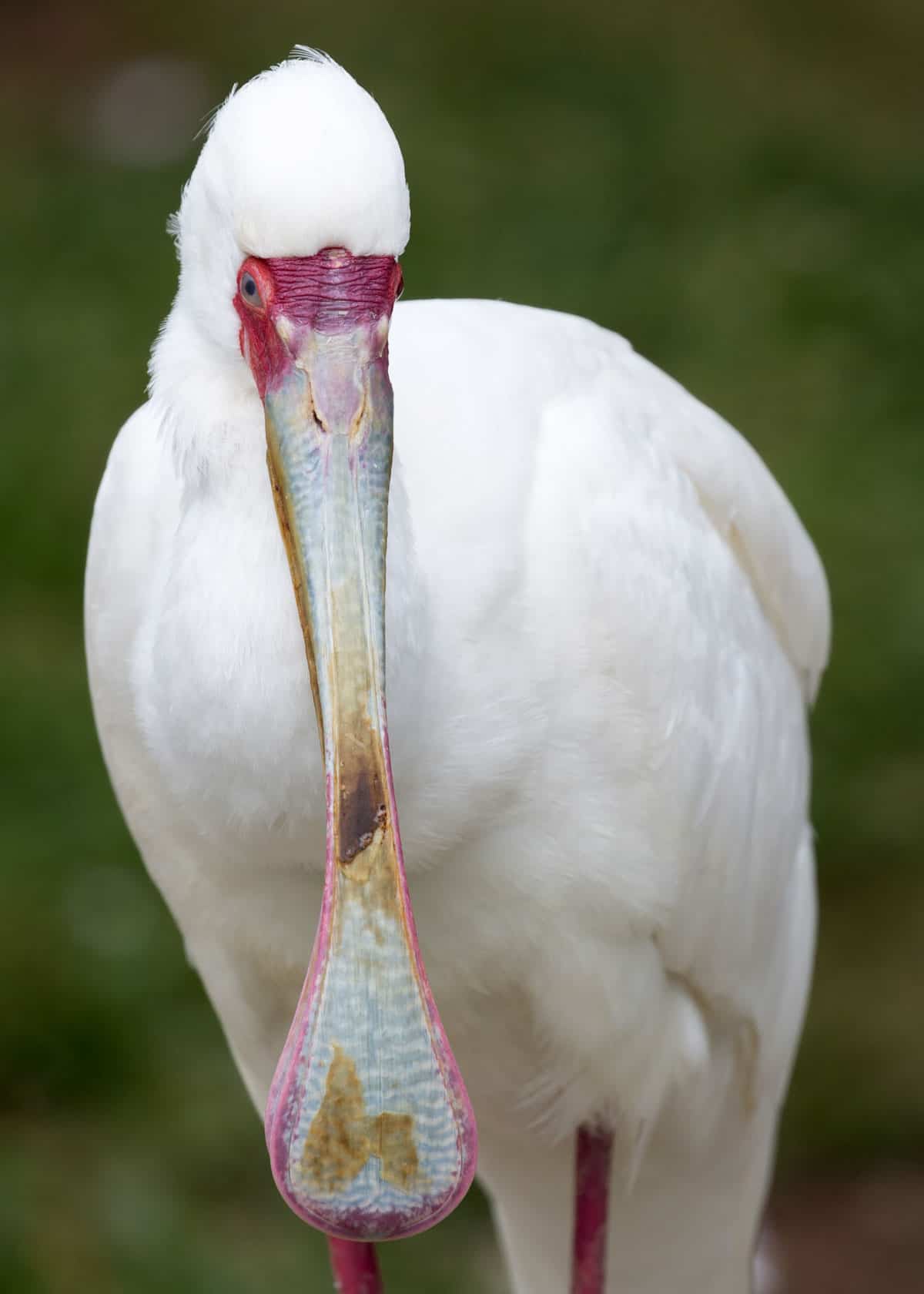
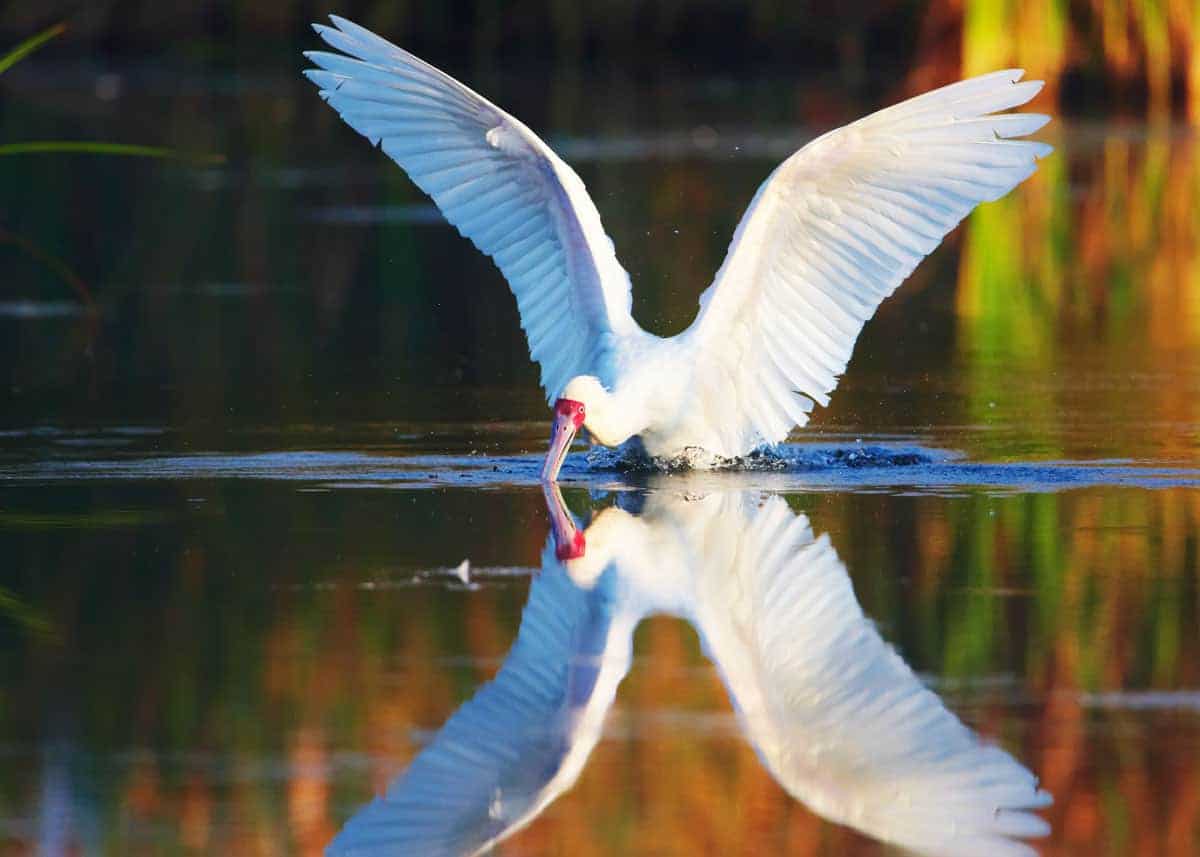
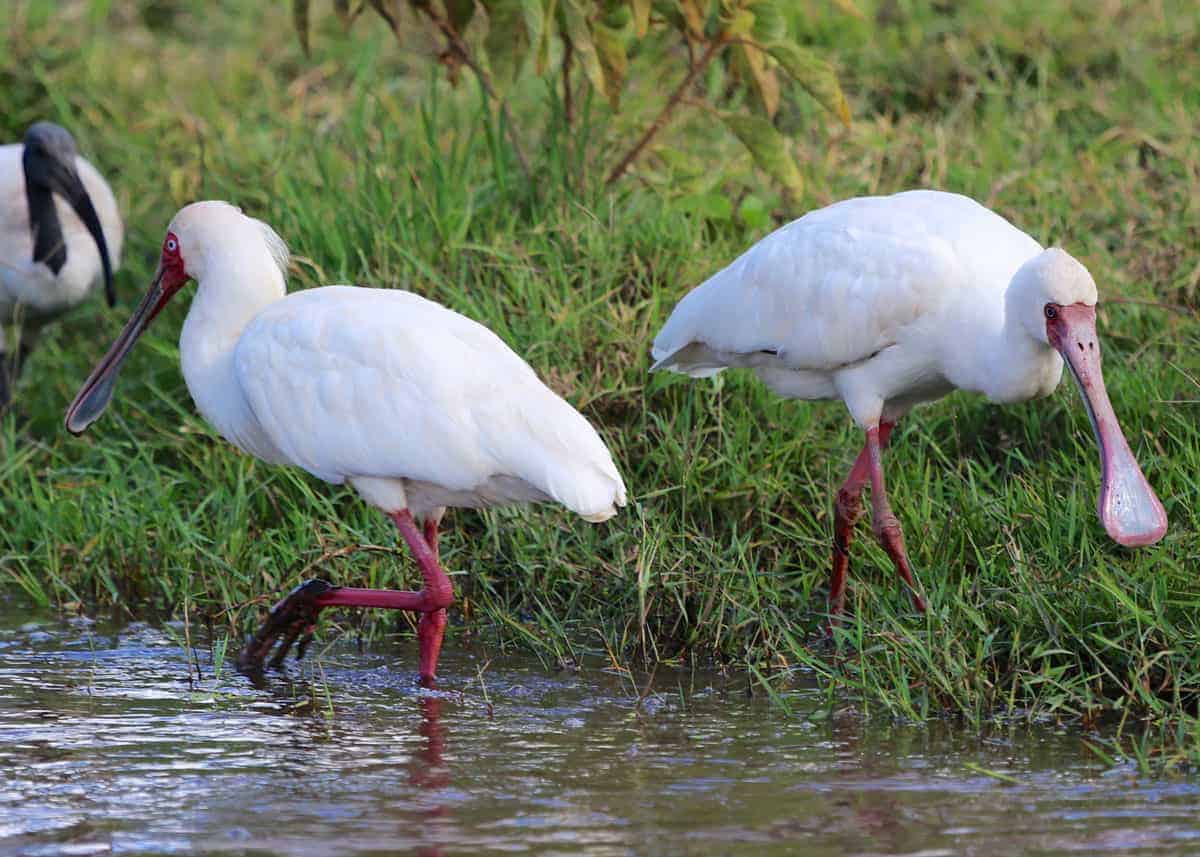
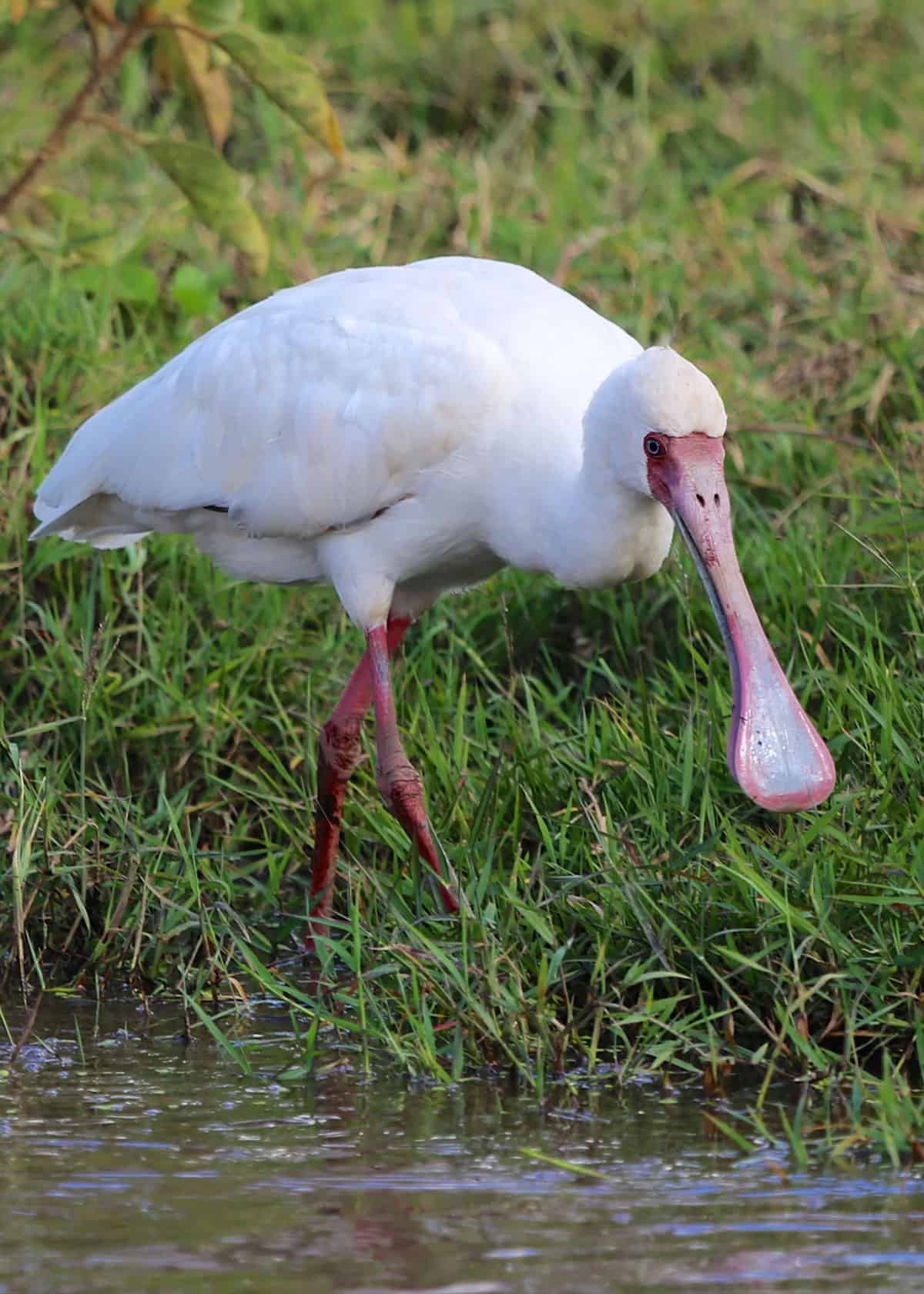






A great read,very informative,thank you.